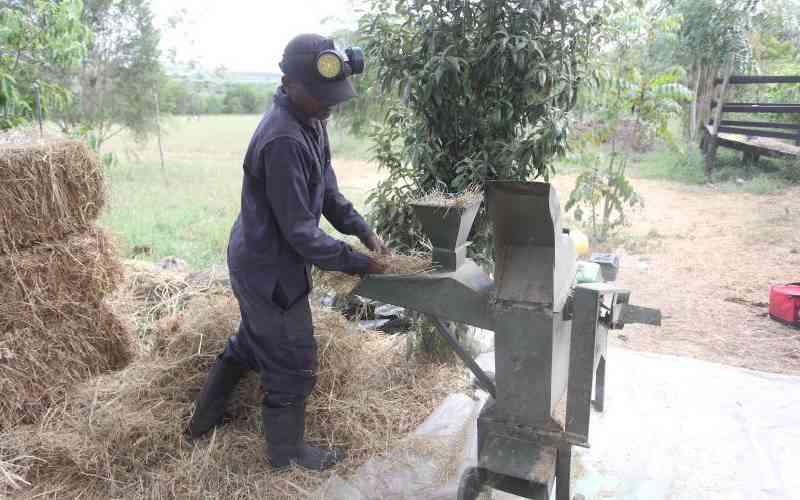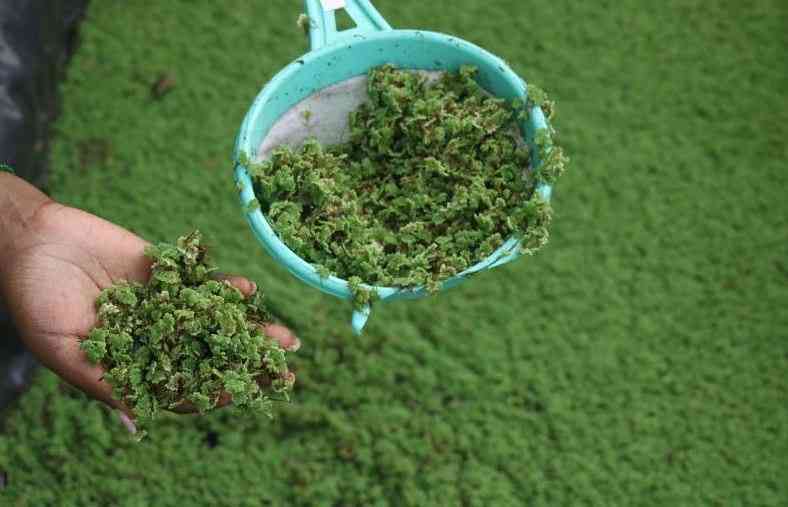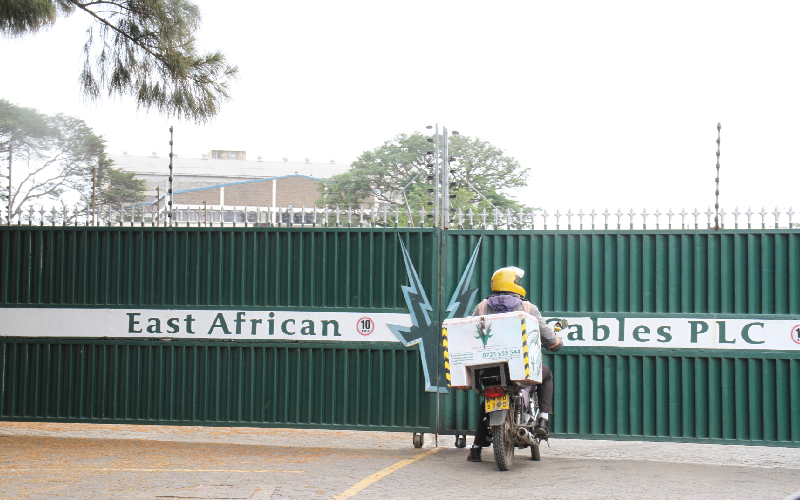Lawrence Mwangi making hay feed for the cows at Bullocks Farm in Isinya. [Wilberforce Okwiri]

Lawrence Mwangi making hay feed for the cows at Bullocks Farm in Isinya. [Wilberforce Okwiri]
I am a regular reader of your weekly column. Thank you for the good work you are doing in educating us on many topics in livestock keeping.
Like any other farmer, I have had great challenges with feed supply throughout the year. During rainy seasons, I have a lot of pasture and produce a lot of milk, but during dry seasons, I do not have enough feed, leading to a drop in milk production.
I have been advised that pasture conservation can help me overcome this problem. Kindly talk about the hay-making process and what types of grass are suitable for it.
Joseph Nderitu,
Nyandarua




Dear Joseph, thank you for the compliment and for your good question, which will certainly also educate other farmers. Hay-making is among the resilience-building interventions being promoted to help farmers overcome the challenges of climate change that have caused a decline in feed supply throughout the year.
Feed is a major cost in dairy livestock production. During rainy seasons, farmers will typically have a lot of feed, with the opposite happening during dry seasons. To even this out, feed is normally conserved and stored for future use during periods of scarcity.
Hay-making is a forage preservation method by reducing the moisture content to at least 20 per cent. At harvesting, the moisture content is approximately 70 per cent or more. This method makes it possible to conserve forage during a time of plenty for use at a time of scarcity.
This can be done on a large scale through mechanisation or can also be done on a small scale through simple techniques.
Hay can be made from pasture or arable crops, including oats, desmodium, lucerne, maize, sorghum, napier grass and Rhodes grass.
Pastures to be turned into hay can still be grazed when the weather is unsuitable, then left for the forage to reach the correct stage at the optimum season for haymaking.
Harvesting should be done when the weather is favourable. Sunny and windy conditions are the best to hasten the drying process. At the stage of harvesting, the forage will have between 70 per cent and 90 per cent moisture content, depending on the pasture species, stage of harvesting, and prevailing weather conditions.
While most hay is cut and left in the field to dry, artificial drying is also available to hasten the drying process.
Leaving the forage to dry in the field, in rows, reduces incidences of mould development and fermentation.
Stay informed. Subscribe to our newsletter
Baling is a common packaging technique that makes hay easy to store by reducing bulkiness, and also helps when done commercially.
Again, baling can be done mechanically or can also be done manually, depending on the scale of production.
During the hay-making process, losses can be encountered through several processes. Fermentation normally occurs through the oxidation process by bacteria and moulds that generate heat and spoil hay. Proper aeration after harvesting helps reduce fermentation.
Loss of leaves occurs in the field during handling, especially when mechanical handling is done. Leaching can also occur when the hay is rained on in the field. This can also occur partially when dried hay is re-wetted. But it is more serious when it happens in newly cut herbage.
At storage, losses can still occur through spoilage if the stacks of bales are not stored in a well-aerated area. The stacks should be packed in a way that ensures good quality.
[Dr Othieno is a veterinary surgeon and the head of communications at the Food and Agriculture Organisation (FAO) Kenya. The views expressed here are not necessarily those of FAO but his own]







